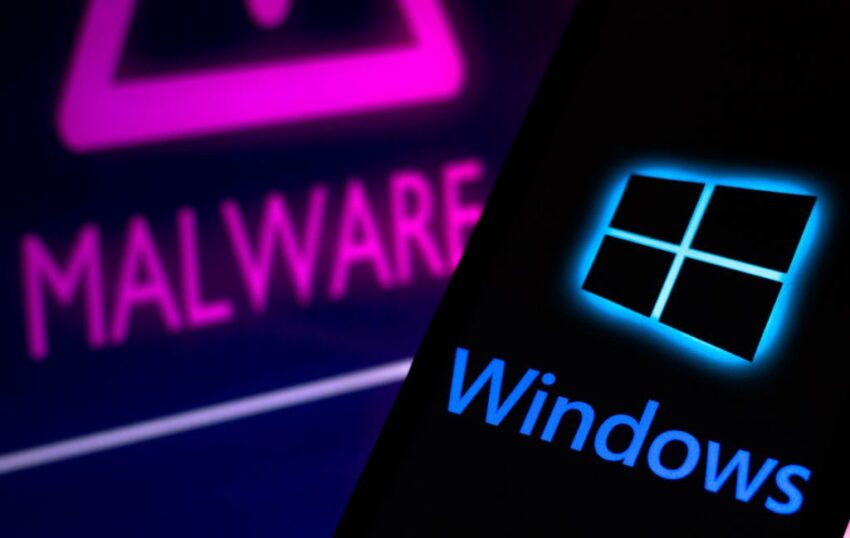
two windows vulnerabilities one a 0-day are Two Windows vulnerabilities—one a zero-day that has been known to attackers since 2017 and the other a critical flaw that Microsoft initially tried and failed to patch recently—are under active exploitation in widespread attacks targeting a swath of the Internet, researchers say.
two windows vulnerabilities one a 0-day are
Overview of the Vulnerabilities
Recent reports have highlighted two significant vulnerabilities affecting Windows systems, both of which are currently being exploited by malicious actors. The first vulnerability is a zero-day flaw that has been in the wild since 2017, while the second is a critical bug that Microsoft has struggled to address effectively. The implications of these vulnerabilities are severe, as they expose systems to a range of attacks that could compromise sensitive data and infrastructure.
The Zero-Day Vulnerability
The zero-day vulnerability, initially discovered by security firm Trend Micro, has been tracked under the designation ZDI-CAN-25373. This vulnerability allows attackers to exploit the Windows Shortcut binary format, a feature designed to streamline the process of opening applications and accessing files. By leveraging this flaw, attackers can execute malicious code without requiring user interaction, making it particularly dangerous.
According to Trend Micro, this vulnerability has been actively exploited by at least 11 advanced persistent threat (APT) groups since its discovery. APTs are typically associated with nation-state actors and are known for their sophisticated tactics aimed at specific targets. The groups utilizing this zero-day vulnerability have been able to deploy various post-exploitation payloads across a wide range of infrastructures in nearly 60 countries, with the highest concentrations in the United States, Canada, Russia, and Korea.
Implications of the Zero-Day Vulnerability
The existence of a zero-day vulnerability that has remained unpatched for several years raises significant concerns about the security posture of Windows systems globally. The fact that it has been exploited by multiple APT groups indicates that it is not only a technical flaw but also a strategic vulnerability that can be leveraged for espionage, data theft, and other malicious activities.
Organizations that rely on Windows systems must take immediate action to assess their exposure to this vulnerability. This includes conducting thorough security audits and implementing additional layers of security to mitigate the risk of exploitation. The ongoing exploitation of this flaw underscores the need for organizations to stay vigilant and proactive in their cybersecurity efforts.
The Critical Flaw and Microsoft’s Response
The second vulnerability in question is a critical flaw that Microsoft has struggled to patch effectively. This vulnerability, which has been linked to the same Windows Shortcut binary format, was initially identified as a significant risk but has not yet been addressed by Microsoft, even seven months after its discovery.
Microsoft’s inability to patch this vulnerability raises questions about the effectiveness of its security protocols and the resources allocated to addressing critical flaws. The delay in providing a fix not only puts individual users at risk but also jeopardizes the security of organizations that rely on Windows systems for their operations.
Understanding the Windows Shortcut Binary Format
The Windows Shortcut binary format is designed to simplify the user experience by allowing users to open applications and files with a single click. However, this convenience comes at a cost, as it can also serve as a vector for exploitation. Attackers can craft malicious shortcuts that, when executed, can lead to unauthorized access and control over the affected systems.
Given the widespread use of Windows systems in both personal and enterprise environments, the implications of this vulnerability are far-reaching. Organizations must recognize that the ease of use provided by features like the Windows Shortcut binary format can also create security vulnerabilities that can be exploited by malicious actors.
Stakeholder Reactions
The discovery and ongoing exploitation of these vulnerabilities have elicited a range of reactions from stakeholders across the cybersecurity landscape. Security researchers, industry experts, and organizations are expressing growing concern over the implications of these vulnerabilities and the need for immediate action.
Security Researchers’ Perspectives
Security researchers have emphasized the importance of timely patching and vulnerability management. The fact that a zero-day vulnerability has remained unaddressed for several years is alarming, and experts are urging organizations to prioritize their cybersecurity measures. Many researchers are advocating for improved communication between security firms and software vendors to ensure that vulnerabilities are addressed promptly.
Industry Response
Organizations that rely on Windows systems are taking the threat seriously. Many are implementing additional security measures, such as endpoint detection and response (EDR) solutions, to monitor for suspicious activity related to these vulnerabilities. Additionally, some organizations are reevaluating their reliance on Windows systems and considering alternative operating systems that may offer better security features.
Mitigation Strategies
In light of these vulnerabilities, organizations must adopt a multi-faceted approach to mitigate the risks associated with exploitation. Here are some strategies that can be implemented:
- Regular Security Audits: Conduct thorough security assessments to identify potential vulnerabilities within your systems.
- Implement EDR Solutions: Utilize endpoint detection and response solutions to monitor for suspicious activity and respond to threats in real-time.
- Employee Training: Educate employees about the risks associated with opening unknown files and executing shortcuts from untrusted sources.
- Patch Management: Stay informed about security updates from Microsoft and apply patches as soon as they become available.
- Network Segmentation: Isolate critical systems from less secure networks to limit the potential impact of an exploit.
Conclusion
The ongoing exploitation of these two Windows vulnerabilities highlights the urgent need for organizations to prioritize cybersecurity. With a zero-day vulnerability that has been active since 2017 and a critical flaw that remains unpatched, the risks to sensitive data and infrastructure are significant. Stakeholders across the cybersecurity landscape must work together to address these vulnerabilities and implement effective mitigation strategies to protect against future threats.
Source: Original report
Was this helpful?
Last Modified: November 1, 2025 at 2:35 am
7 views














